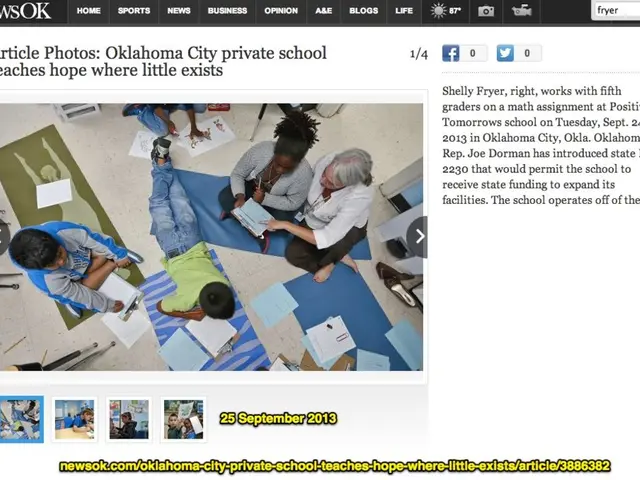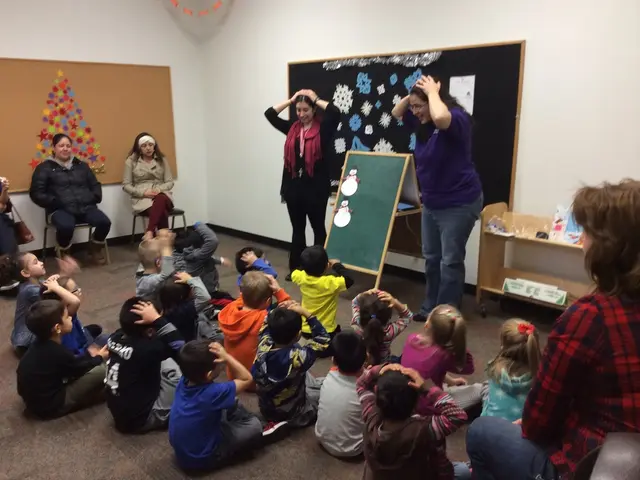Overcoming the Digital Divide among Generations: Connecting Youth and Elders in Kazakhstan's Digital Landscape
Dinara Shokayeva, a PhD student at Nazarbayev University's Graduate School of Public Policy, shares her observations on the digital divide between youth and seniors in accessing e-government services in Kazakhstan.
In the glow of Kazakhstan's leap forward to 24th place in the global e-government development index, a poignant narrative unfolds in a charming apartment tucked away in Astana's Baikonur district. A retired couple, my grandparents, struggled to navigate the Egov platform, ultimately surrendering to the complexities. They were the embodiment of a generational digital gap that our modernizing nation faces.
In stark contrast, the government's Digital Kazakhstan program has been lauded for harnessing digital power in multiple sectors, with promising advancements highlighted by the younger generation. However, the older population is often left behind in this digital revolution.
A Nation Divided
The digital divide between the young and old is a troubling reality in Kazakhstan. Scams and fraud have prospered in recent years, with the elderly population being the most vulnerable. This trend became even more evident during the COVID-19 pandemic, when online-based government help for affected citizens left many unfamiliar with the application process or unable to apply.
The Steps Forward
Addressing this issue requires intentional action. Government-sponsored programs to increase digital literacy among seniors should be a top priority. Collaborating closely with the private sector, particularly telecom companies, would enable the implementation of mandatory courses and training sessions focused on reducing digital illiteracy.
These classes could be held in popular gathering spots for older adults, such as libraries, sports centers, and theaters, fostering an environment of intergenerational dialogue.
A Digital Kazakhstan for All
To bring the digital divide into focus, it's crucial to adapt the national digitalization services' indicators to capture the divide between the younger and older generations. Despite potential negative impacts on the country's international ranking, this action could prompt increased learning opportunities and adaptations for e-government platforms to cater to seniors.
In an effort to diminish the rural-urban digital divide, plenty of initiatives have emerged, focusing on education for children and empowering females. Extending these efforts to the elderly population addresses the growing digitalization of services and opens the doors to a more equitable e-government environment in Kazakhstan.
Dinara Shokayeva is a PhD student at the Graduate School of Public Policy, Nazarbayev University. This article expresses the author's views and opinions, which may not reflect those of The Astana Times.
Disclaimer: The views and opinions expressed in this article are those of the author and do not necessarily reflect the position of The Astana Times.
Strategies to Bridge the Divide
- Education and Training Programs
- Develop accessible training programs for seniors, focusing on basic digital literacy and how to use e-government services.
- Provide educational materials and resources in local languages to reduce barriers for non-tech-savvy users.
- Simplified Interfaces
- Design e-government platforms with simple, intuitive interfaces that are easy to navigate for those with limited digital experience.
- Incorporate features like clear font sizes, high contrast modes, and voice assistance to make services more accessible.
- Inclusive Infrastructure
- Establish public access points where seniors can use e-government services without needing their own devices.
- Create dedicated centers where seniors can receive assistance and training on using digital services.
- Collaboration with Stakeholders
- Collaborate with local organizations, NGOs, and community groups to promote e-government services among seniors and provide support.
- Set up mechanisms to gather feedback from seniors on how e-government services can be improved for their needs.
- Digital Literacy Campaigns
- Launch public awareness campaigns to highlight the benefits of using e-government services and how they can improve daily life.
- Engage local influencers and community leaders to promote e-government services among seniors.
- Technology Integration
- Leverage AI to automate routine tasks in e-government services, making them more efficient and user-friendly.
- Expand services like telemedicine to remote areas, improving healthcare accessibility and demonstrating the potential of digital services.
- Regulatory Support
- Develop or enhance legal frameworks to protect users' data and ensure privacy in e-government services, building trust among all users.
- Establish clear standards and certification processes for digital services to ensure quality and reliability.
By implementing these strategies, Kazakhstan can effectively bridge the digital divide between younger and older generations, enhancing inclusivity and accessibility in e-government services.
- In order to address the digital divide in Kazakhstan, it's essential to establish government-funded learning programs that focus on digital literacy for seniors.
- Engaging telecom companies, as part of these programs, could facilitate the implementation of compulsory digital literacy courses and workshops.
- These classes could be held in senior-preferred locations, such as libraries, sports centers, and theaters, encouraging interactions between generations.
- Achieving a truly digital Kazakhstan means adapting national digitalization service indicators to recognize the disparity between younger and older generations.
- To create a more equitable e-government environment, it's crucial to extend current rural-urban digital divide initiatives to include seniors, ensuring their digital literacy and access to services.







